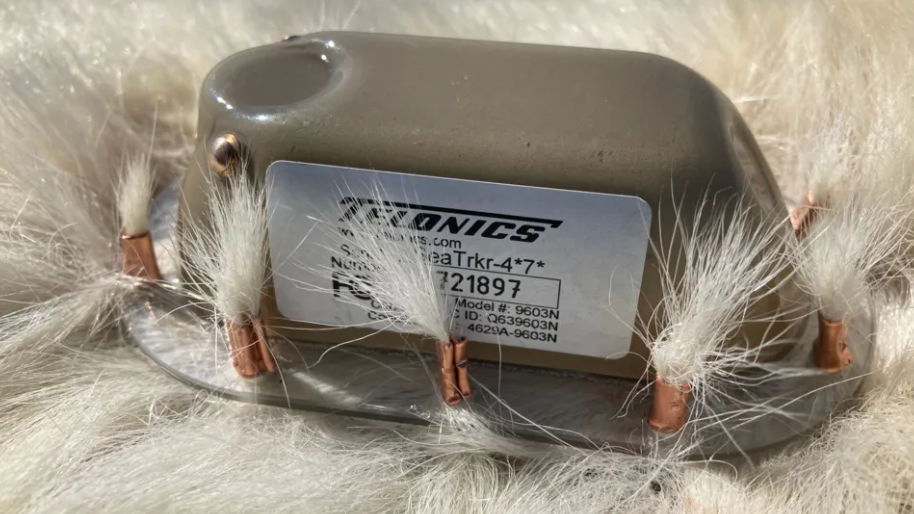Fur trackers could help monitor polar bear behaviour

- Published
A tracking device that attaches directly to the fur of a polar bear could help researchers track the movements of the animals more effectively.
Researchers at York University looked at new fur and ear-mounted tags to track polar bears.
Their study was published in the journal Animal Biotelemetry.
Traditionally, satellite collars are used to track polar bears, but these can only be attached to females because they slip off the more cone-shaped heads of the males.
Researchers say this has resulted in a gap of data in the study of polar bears.
They tested three fur tag designs (SeaTrkr, tribrush and pentagon tags), which they fixed to 15 adult and 1 subadult male polar bears along the coast of Hudson Bay during August–September 2021–2022.
Fantastic facts to mark World Polar Bear Day!
- Published27 February 2021
How bad is climate change for polar bears?
- Published20 July 2020
These fur tags were compared with ear tags put on 42 male polar bears captured on the coast or the sea ice between 2016 and 2022.
The study found the three fur tag designs worked for shorter periods (22-58 days) than the ear tags, which remained on for 121 days as they were more securely attached.
The results of the monitoring found that polar bears spent the majority of their time resting while on land, but increased the time spent travelling as temperatures cooled.
Although the ear tags stayed on longer, the researchers said the fur tags, which were more easily attached, will be useful for following bears that have been relocated after coming too close to communities.

The best performing tag stayed on for an average of 58 days
The best-performing device was called a SeaTrkr tag. It stayed attached for an average of 58 days and allowed the scientists to pinpoint the bears’ location to within just a few metres using its GPS system.
Climate change is bringing bears and humans closer together, and there have been reports in the last few years in Canada and Russia where polar bears have wandered into villages in search of food.
When they are caught, they are sometimes transported to places away from the communities.
A temporary tracking device would allow conservationists to know if they are moving close to where people live again.
“Successfully attaching telemetry tags to polar bear fur has never been done before, and we’re excited to share the results of this innovative work,” said Tyler Ross, lead author of the paper and researcher at York University.
“The fur tags showed great promise, and give researchers the ability to study the behaviours and movements of polar bears that we have very little data on.”
